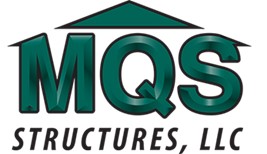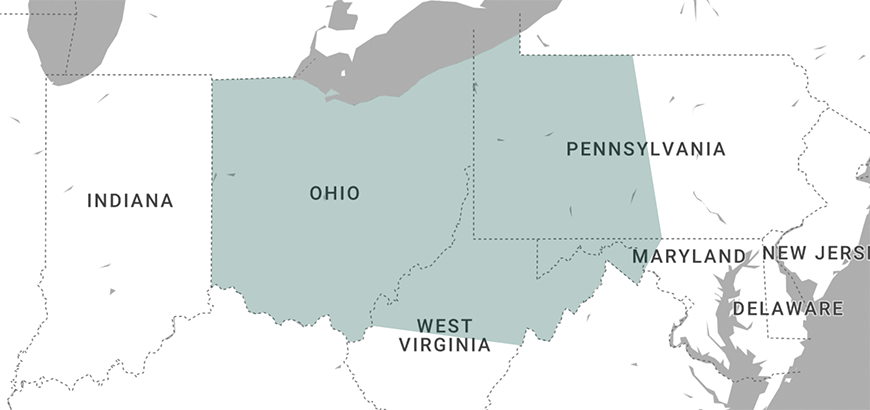Pole buildings serve as workplaces, storage areas, or even residences. They are efficient structures but can succumb to damage without proper moisture control, undermining their integrity and causing discomfort. Talk to your pole barn builders in Kentucky about the following ideas.
- Properly Seal and Install Roofing and Siding
- Install Gutters and Downspouts – Pole Building in Kentucky
- Build Up the Construction Site to Prevent Flooding
- Plan for Site Drainage – Pole Building in Kentucky
- Maximize Interior Ventilation – Pole Building in Kentucky
- Install Doors and Windows the Right Way – Pole Building in Kentucky
- Build Porches and Porticos
- Add Overhangs – Pole Building in Kentucky
- Install Window Awnings
- Perform Routine Maintenance – Pole Building in Kentucky
- MQS Structures: Custom Pole Barns in Kentucky
Properly Seal and Install Roofing and Siding
The roof and siding of your pole building are the first lines of defense against moisture. Ensure that the roofing material is properly installed and sealed, leaving no space for water to seep through. For siding, select materials known for their durability and moisture resistance, such as metal panels or treated wood cladding. Pay attention to the seams and junctions where different materials meet. These are potential leak paths. Regular inspections for damage or wear can prevent water intrusion before it becomes a severe issue.
Install Gutters and Downspouts – Pole Building in Kentucky
Efficient water management on your building’s exterior is critical to keep the interior dry. By installing gutters and downspouts, you direct rainwater away from the structure, minimizing the chance of water pooling near the foundation. Ensure that gutters are cleaned regularly to prevent blockages that can cause water to overflow and infiltrate the walls. Downspouts should extend several feet from the base of your building to effectively divert water. Consider integrating rain barrels at the base of downspouts to collect water for reuse, which is both eco-friendly and practical.
Build Up the Construction Site to Prevent Flooding
When constructing your pole building, consider the elevation of the site. Raising the site ensures that water doesn’t flow towards the building during heavy rainfall, thus preventing potential flooding. Building up the site may involve adding fill dirt around the structure, establishing a slope that directs water away from the foundation. Consult with a civil engineer or landscaping expert to appropriately grade the site. The foundation should sit at the highest point, with the surrounding terrain gently sloping outward.

Plan for Site Drainage – Pole Building in Kentucky
Beyond grading the site, implement a comprehensive drainage plan that includes French drains, catch basins, or swales to manage excess water effectively. Assess the natural water flow on your property and install drainage solutions accordingly. For areas susceptible to heavy rainfall or melting snow, consider installing additional drainage capacity to handle the influx of water. Regularly inspect and maintain your drainage system to ensure it functions optimally. A good drainage system relieves pressure on your foundation and reduces the risk of moisture-related building damage.
Maximize Interior Ventilation – Pole Building in Kentucky
Good ventilation within your pole building is crucial for preventing the accumulation of moist air, which can lead to condensation and mold. Ensure that your building’s design incorporates adequate vents, windows, or mechanical ventilation systems, especially in areas prone to humidity, such as kitchens or showers. Use dehumidifiers in particularly damp areas to keep humidity levels in check. Strategic placement of vents near the roof peak can promote hot air to escape, reducing the likelihood of condensation forming inside the structure. Promoting airflow with fans or open windows during dry weather can also help reduce interior moisture.
Install Doors and Windows the Right Way – Pole Building in Kentucky
Incorrectly installed doors and windows are common entry points for moisture. Ensure each window and door is properly framed, flashed, and sealed to prevent leaks. Prefer quality, weather-resistant materials for frames and seals that can withstand temperature fluctuations without cracking or warping. Consider double-paned windows that not only insulate but also minimize condensation risk. If you notice drafts or moisture nearby, address these issues promptly to prevent long-term moisture problems.

Build Porches and Porticos
Porches and porticos add architectural character to your pole building, but they also serve a functional purpose by sheltering entrances from the elements. By having a covered area, you prevent rainwater from directly hitting doors and windows, thereby reducing the amount of water that could potentially enter your building.
Add Overhangs – Pole Building in Kentucky
Overhangs protect your building by extending the roof further out from the walls, preventing rain from running down the sides of your structure. This minor feature can make a significant difference in reducing the risk of water penetration and siding wear. The size and angle of the overhang should be designed according to your local climate and prevailing weather patterns. While it may represent an additional upfront cost, overhangs can prolong the lifespan of your siding and lower maintenance costs over time. They also help shield windows from direct sunlight, improving cooling and energy efficiency.
Install Window Awnings
Another way to shield your windows and reduce the risk of moisture penetration is by installing awnings. These provide cover from rain while allowing windows to be opened for ventilation, even during light rainfall. Awnings also prevent direct sunlight from heating up your building and causing fluctuations in indoor humidity levels. Choose awning materials that are both waterproof and durable to withstand harsh weather conditions. Retractable awnings offer flexibility, giving you control over your building’s exposure to the elements.
Perform Routine Maintenance – Pole Building in Kentucky
One of the most critical aspects of moisture control is regular maintenance. Check your building periodically for any signs of moisture damage, such as water stains, peeling paint, or mold growth. Look for damaged roofing materials, loose siding, or compromised seals around doors and windows. Inspect gutters, downspouts, and drainage systems to ensure they function as intended. Promptly addressing minor issues can prevent them from escalating into costly repairs and major moisture problems.

MQS Structures: Custom Pole Barns in Kentucky
If you are interested in building a horse barn, shop, or post frame garage in Kentucky, we can help. If you need more information about the building process, contact us at MQS Structures.
At MQS Structures, we are post-frame (pole frame) building specialists. If you plan on constructing new post frame buildings in Kentucky, we can work with you to ensure you get exactly the building you need.
Do you need pole barn builders in Kentucky? Our founder and owner, Caleb Miller, began his building career with his Amish Mennonite family and applies the same work ethic and expert craftsmanship to every building we put up. So, if you are looking for the best custom post frame builders in Kentucky––you found us!
Call us today at (855) 677-3334, or contact us online for a free quote on your new agricultural buildings in Kentucky. We look forward to hearing from you soon!


